 Mysteries
Mysteries  Mysteries
Mysteries  History
History 10 Surprising Stories About the Texas Rangers
 Humans
Humans 10 Philosophers Who Were Driven Mad by Their Own Theories
 Miscellaneous
Miscellaneous 10 Video-Game-Worthy Weapons and Armors from History
 Weird Stuff
Weird Stuff 10 Psychics Who Accurately Predicted Wartime Events
 The Arts
The Arts 10 Pieces of Art Inspired by a Broken Heart
 Health
Health 10 Science Fiction-Sounding New Medical Treatments
 History
History 10 Surprising Facts About the Father of Submarine Warfare
 Space
Space Ten Astonishing New Insights into Alien Worlds
 Weird Stuff
Weird Stuff 10 Bizarre Summer Solstice Rituals Still Practiced Today
 Mysteries
Mysteries Top 10 Haunting Facts About the Ghost Ship MV Alta
 History
History 10 Surprising Stories About the Texas Rangers
 Humans
Humans 10 Philosophers Who Were Driven Mad by Their Own Theories
Who's Behind Listverse?

Jamie Frater
Head Editor
Jamie founded Listverse due to an insatiable desire to share fascinating, obscure, and bizarre facts. He has been a guest speaker on numerous national radio and television stations and is a five time published author.
More About Us Miscellaneous
Miscellaneous 10 Video-Game-Worthy Weapons and Armors from History
 Weird Stuff
Weird Stuff 10 Psychics Who Accurately Predicted Wartime Events
 The Arts
The Arts 10 Pieces of Art Inspired by a Broken Heart
 Health
Health 10 Science Fiction-Sounding New Medical Treatments
 History
History 10 Surprising Facts About the Father of Submarine Warfare
 Space
Space Ten Astonishing New Insights into Alien Worlds
 Weird Stuff
Weird Stuff 10 Bizarre Summer Solstice Rituals Still Practiced Today
10 Monotheistic Gods You’ve Never Heard Of
When most people think of monotheistic gods, they think of bearded and potentially hostile men on high, the mainstay of Abrahamic religions like Judaism, Christianity, and Islam. The God of Abraham is often simplistically compared with the dualism of the traditional Iranian faiths, the polytheism of the dharmic faiths, and the pantheism and vagueness of the Far Eastern traditions. Yet the concept of one supreme God has popped up in different parts of the world in unusual manifestations.
10 Hayyi Rabbi
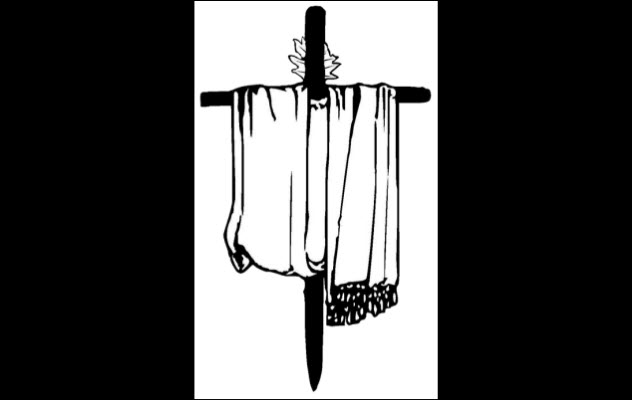
The Mandaeans (aka Sabaeans) are practitioners of an Abrahamic religion who believe their religion to be older than Judaism, Christianity, or Islam but who have not actively proselytized since the first century AD. They now believe that the only way to become a member of their faith is to be born into it.
Their god is known as Hayyi Rabbi, to whom all absolute properties belong. Hayyi Rabbi created all the worlds of the universe as well as souls, which were placed into human bodies by angels. While the soul is in the material world, it must suffer. But as part of the divine creation, a soul should also do good deeds and confront evil. Upon death, the soul is purified and returns to its place of origin.
The Sabaean creation story is intriguing and poorly understood, but it describes the divine creation of the universe and the genesis of evil:
In the name of the Life and in the name of Knowledge-of-Life (Manda-d-Hiia) and in the name of that Primal Being who was Eldest and preceded water, radiance, light, and glory, the Being who cried with His voice and uttered words. By means of His voice and His words, Vines grew and came into being, and the First Life was established in its Abode.
And He spoke and said, “The First Life is anterior to the Second Life by 6,000 myriad years and the Second Life anterior to the Third Life by 6,000 myriad years and the Third Life more ancient than any ‘uthra by 6,000 myriad years. And any ‘uthra is older than the whole Earth and older than the Seven Lords of the House by 770,000 myriad years. There is that which is infinite.”
At that time, there was no solid Earth and no inhabitants in the black waters. From them, from those black waters, Evil was formed and emerged, One from whom a thousand thousand mysteries proceeded and a myriad myriad planets with their own mysteries.
Their holy book is the Ginza Rabba (“Great Treasure”), supposedly given to Adam by an archangel at the beginning of the world. In the Sabaean religion, God is symbolized by a cross covered in a piece of white silk. The cross represents a plus sign and the four corners of the universe, and the cloth symbolizes the light of God.
9 Al Aaqal Al Kulli
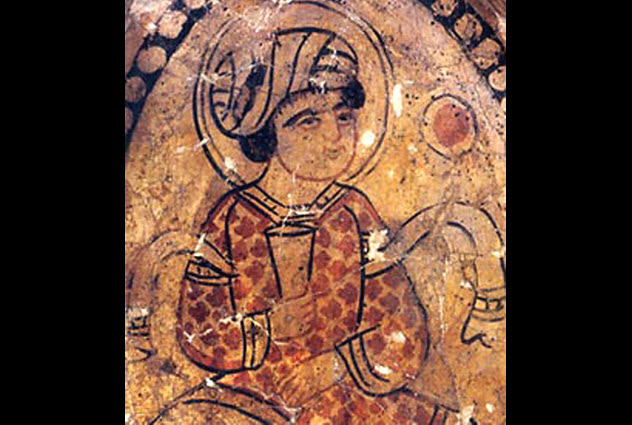
Members of the Syrian sect Druze believe that God is not a separate entity but instead that all existence is the expression of an absolute deity. They believe that the universe exists due to God’s divine nature (amr), as the will of God creates the divine imperative that creates the universe.
Physical existence is the manifestation of God (badw), and God is therefore transcendent (munazzah) or above the universe, and immanent (mawjud) within it. Separation from God is described as the lack of divine light, also called adversity (didd).
Unlike most Abrahamic religions, the Druze believe that human souls transmigrate through reincarnation, with the good having more fortunate incarnations. Heaven and hell are abstract concepts denoting the relative spiritual distance from God, and human beings reincarnate until they are reunited with Al Aaqal Al Kulli (“Cosmic Mind”).
The Druze believe that God incarnated himself in the material world through the Fatimid caliph al-Hakim. While Muslims believe the caliph died in 1027, the Druze contend that he vanished and is waiting to reappear and bring about a new golden age.
Although al-Hakim was an incarnation of God in his unity, it is believed that other human beings can manifest as different aspects of God, including the mind, the soul, the word or pure expression of truth, the mental power of the will, and the materialization of will in the material world. Humans who incarnate as these five aspects of God are known as the five superior ministers.
8 Shangdi
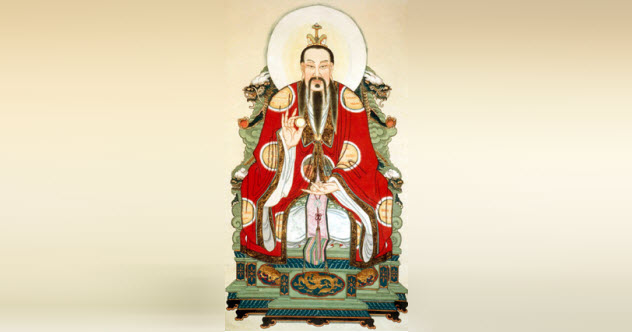
The Shang dynasty of China recognized the existence of a supreme god, known as Di (“Lord on High”) or Shangdi (“Celestial Supreme Ruler”), who was supreme over all other divine entities and spirits, including those of ancestors.
He dominated the spiritual hierarchy of the divine in the same way as a king ruled over the temporal hierarchy. Shangdi also had power over natural disasters and the weather. He was believed to dwell in the heavenly city of Shang with the ancestors of the royal family, and he communicated to human beings through oracle bone divination.
When the Zhou dynasty came to power, the worship of Shangdi was slowly replaced or conflated with the worship of Tian (“Heaven”). Zhou writers claimed that the deities of the Shang pantheon had died and returned to Earth as humans to serve in the wars on both sides.
In the early Zhou period, Tian and Shangdi may have been interchangeable concepts, with each seen as a personal and political deity serving as a nonhuman source of moral behavior. As time went by, Heaven became a more distant and impersonal concept, more like a natural force of fate. Temples to Shangdi survived for a time, but Tian remained the political supreme leader of the universe.
When the Jesuits came to China, they associated the Christian God with Shangdi because he was invisible and not represented in iconography. They claimed that God had communicated with the ancient Chinese in the form of Shangdi, but His will was obscured by Confucian and Taoist misinformation and superstition.
7 Shiva
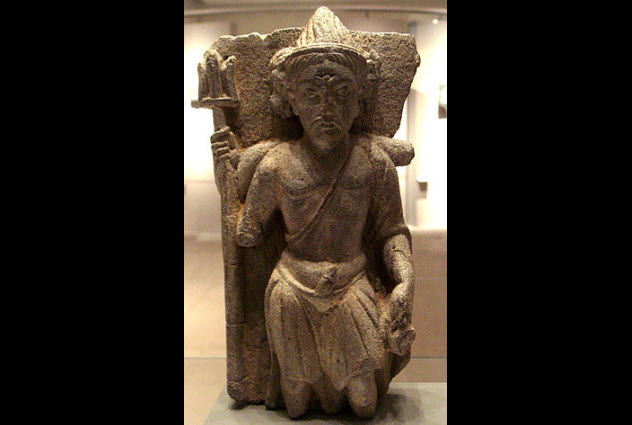
Although the name of this Hindu god is well-known, he is known largely as the lord of creation and destruction within the Hindu pantheon. His archetypal form was known as Rudra, represented as a man with horns and an erect phallus who was surrounded by the animals of which he was the shepherd-protector.
For followers of the Shaivite branch called the Shaiva Siddhanta, however, Shiva is the ultimate godhead while other gods are mere manifestations. This combined the concept of Shiva as a personal god with the concept of Brahman, the transcendent divinity.
In the Tamil text Tiru Murai, the universe is composed of three absolutely real substances: Pati (Shiva), pashu (living souls), and pasha (the material universe). Pashu and pasha exist because of Pati, but all are eternal and cannot be created or destroyed. Shiva is seen as the only deity that can liberate human beings from the impurities of matter and the ego.
Vishnu and Brahma, the two other major gods in Hinduism, are seen in this belief system to be subordinate to Shiva and work according to his instructions. Shiva manifests as a personal god through Shakti, who is considered Shiva’s wife in traditional Hindu terms but is seen by followers of Shaiva Siddhanta as the divine force of potentiality, desire, and creative spirit. The relationship of Shakti and Shiva is described as akin to the relationship between a beam of sunlight and the Sun itself.
6 Hypsistos
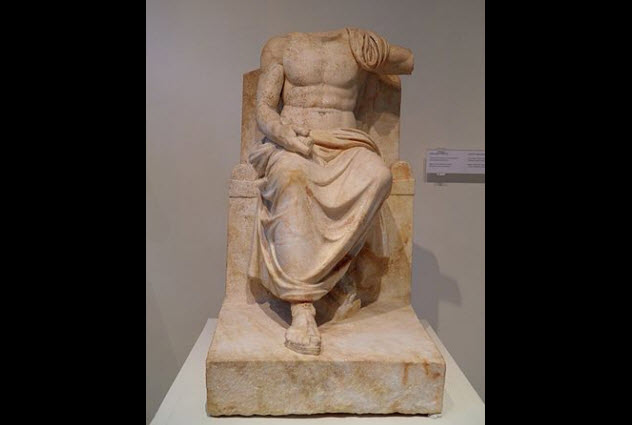
According to Greek records, the inhabitants of Asia Minor and the Black Sea region held a widespread belief in a single god known as Hypsistos (“Most High”) from 400 BC to AD 200. This was the result of what some believe to be a Jewish-pagan syncretic religion, often referred to as Theosebeis (“God-fearers”), which was later subsumed into Christianity. This may have resulted from pagans who were attracted to monotheistic notions but were unwilling to be restrained by Mosaic law.
Others believe that the expression “Hypsistos” was applied to a variety of different belief structures, both Jewish and pagan. The term was sometimes applied to Zeus or local supreme deities. Records of the worship of Hypsistos north of the Black Sea may have been references to a Bosporan royal cult associated with Sarmatian sky gods and rider gods.
In Anatolia, references to Hypsistos may have denoted local monotheism, henotheism, or the influence of Zoroastrianism. In Athens, the worship of Hypsistos may have been derived from earlier Zeus worship but contained unique elements such as a focus on healing and a large number of female worshipers.
Apollo of Klaros gave this description of Hypsistos:
He is the Lord of all, self-originated, self-produced, ruling all things in some ineffable way, encompassing the heavens, spreading out the earth, riding on the waves of the sea; mixing fire with water, soil with air, and earth with fire; of winter, summer, autumn, and spring, causing the changes in their season, leading all things toward the light and settling their fate in harmonious order.
5 Hanulnim

In ancient Korean shamanism, there was a belief in many gods and spirits of nature, but there was special respect given to Chunshin (aka Hanulnim), the Lord of Heaven, who was supreme over all creation. Exposure to Christian ideas in the early modern era led to the development of the Cheondogyo religion. In 1860, Ch’oe Suun claimed to have received a visit from Hanulnim, who taught him that humanity was plagued by a spiritual sickness.
Hanulnim is perceived as the Great Totality that is present within all human beings, who are held to be identical with God. The message of Cheondogyo is to treat other people as one would treat God, thereby creating a paradise on Earth. Cheondogyo believers say that this unity of God and all humans creates an equality in their faith that is absent from other religions.
Yoon Sook-san describes the Cheondogyo conception of God as follows:
This God Hanulnim does not reside in a distant heaven far removed from human beings standing with their feet planted firmly on this Earth. Rather, Hanulnim fills both heaven and Earth. In other words, this God occupies every part of the universe. Hanulnim fills the Cosmos while also being “concretely enshrined within my body.”
4 Chukwu
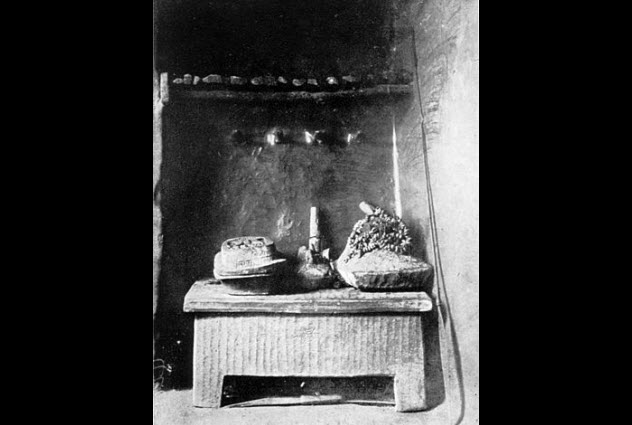
Although African religions tend toward polytheism and pantheism, monotheistic ideas are by no means unknown. Among the Igbo people of West Africa, there is a belief in a supreme creator deity known as Chukwu (“Great Chi”) with the force or energy to create life. It is believed to be a unity of male and female, the seen and unseen, and the animate and inanimate.
The human relationship with Chukwu is said to manifest in Odinani (“Grand Norm”), a set of divine laws which are not written but rather inherent in each individual’s Chi, a unique guardian spirit or guiding principle which determines a person’s fate according to Odinani. Going against the Odinani will bring about a visit from a malevolent devil spirit known as Ekwensu, who is a servant of Chukwu.
In some sense, Chukwu is a distant god, having delegated responsibility for different parts of the universe to subordinate deities or spirits after becoming exasperated with the ignorance of mankind. On the other hand, Chukwu is also believed to be in a constant act of creation every moment of every day. He is perceived as a perfectly transcendent, noble, and omniscient deity who is perfectly good. Meanwhile, death and evil enter the world through the works of man.
Some Igbo thinkers reject the historicity of Chukwu, with one claiming that the concept was the invention of Christian missionaries because the Igbo did not originally believe in a supreme being.
However, theologian Christopher Ezekwugo argues that the concept was popularized by the Arochukwu clan as a way of manipulating Igbo beliefs to support their slave trading. Still, most Igbo theologians note that beliefs in Chukwu were common throughout the Igbo region, and shrines to the god have been found in regions beyond the influence of the Arochukwu or the missionaries.
3 Wusheng Laomu
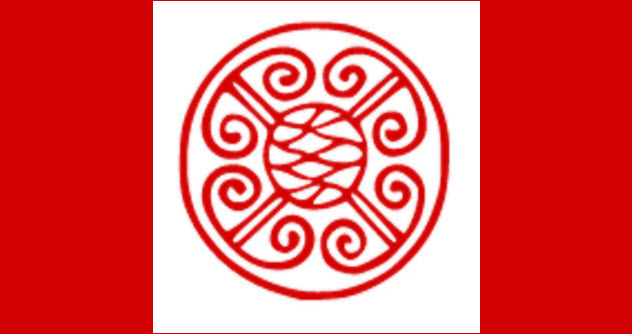
During the middle of the Ming dynasty period, folk religions deriving from Buddhist, Taoist, and Christian ideas rose against the mainstream Confucian order in China. Many of these traditions held a belief in Wusheng Laomu (“Unborn Mother”). She was also known as Wucheng Laomu (“Eternal Mother”) and Wuji Laomu (“Great Mother of Nonbeing”). She is believed to have been the creator of the universe, chief creative and transformative force, and progenitor and matriarch of all divine and mortal beings in the universe.
The Eternal Mother existed before all things and created a man and woman who founded the human race. She sent humanity to live on Earth, but we became lost and confused in our lust for material things. Weeping, she sought to bring her children back to the “Pure Land” by sending two Buddhas to light the way to salvation. They had ruled over the Earth in eons past.
These beliefs stated that the Eternal Mother would eventually send a third Buddha to save the rest of humanity and lead them to the promised lands of the Mother. This act of returning to the holy womb was known as going to zhenkong jiaxiang, the native land of true emptiness.
2 Alekh
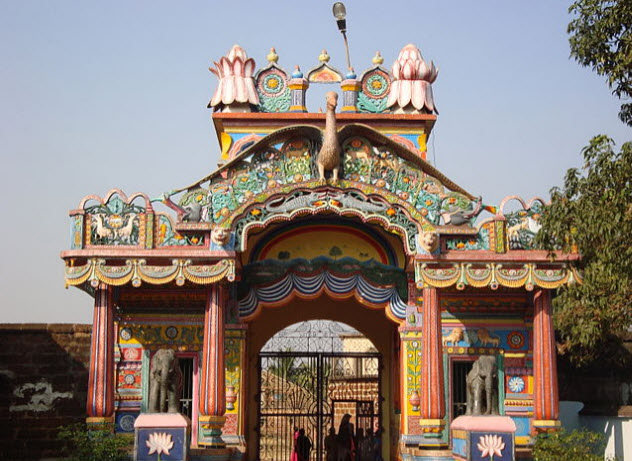
Founded in the 19th century in the Indian state of Orissa, Mahima Dharma was a religion that worshiped a deity known as the Mahima Alekh, the highest, unwritten, and indescribable deity. Followers see this god as sunya (“void”), signifying everything and nothing. Believing that this deity can only be approached through meditation, asceticism, and ritualism, they reject all forms of idol worship.
In the Orissa Review, Alekh of the Mahima Dharma faith has been described as follows: “The ultimate reality is One and the only One. The human mind through ages has worshiped the One as manifested in many. But the true worship is, in the words of Bhima Bhoi, ‘to come down to the stem leaving the branches.’ In other words, to withdraw from the many to One and the only One.”
While Mahima Dharma has influence from Hinduism and Buddhism as well as Western religions like Christianity and Islam, it is best understood as a reaction against the social castes supported by traditional Brahminism. Mukunda Das, the founder of Mahima Dharma, cared for a local god at a shrine in the Kapilas hills for several year. Afterward, he began to preach that the gods of the Hindus were little more than stone idols and that the creator of the universe was Alekh, a deity without form.
Over time, belief in this single deity became popular in Orissa and eventually spread to Andhra, Assam, and Bengal. Another founding figure was Bhima Bhoi, whose writings turned the Mahima Dharma sect into a humanist cult by declaring that even the worst sinner could achieve deliverance through Alekh.
1 Haq And Tawsi Melek
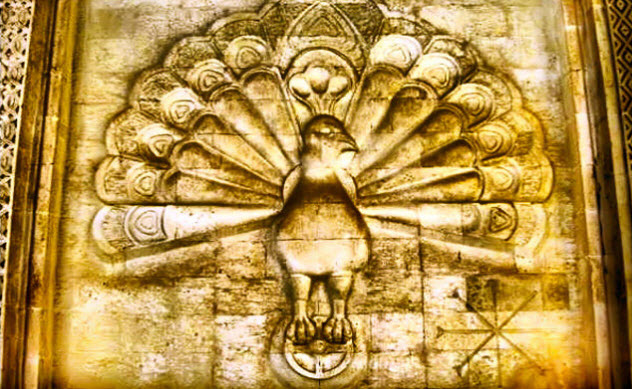
Many non-Muslim Kurds are members of three religious denominations that came from the ancient faith known as Yazdani (“Cult of Angels”): Yezidism, Alevism, and Yarsanism. Yazdani also influenced the rise of 19th-century Babism and Bahaism.
Followers of the Yazdani faiths believe that the material universe was created by Haq (“Universal Spirit”) through the manifestation of a supreme avatar, who was recognized as the Lord God by all Yazdani faiths except the Yezidis. They believe that the Universal Spirit has manifested as different avatars throughout history, although the Haq doesn’t intervene in the material universe in and of itself.
Members of the Yazdani faiths profess a belief in seven angelic beings that protect the universe against seven evil spirits of matter. The Yezidis place particular importance on the angel called Tawsi Melek or Melek Taus (“Peacock Angel”). In their faith, Tawsi Melek is the lord and creator of the universe but not the Supreme God. Instead, the Supreme God created Tawsi Melek as an emanation in the form of a seven-colored rainbow, with six more angels following as emanations in specific colors.
Tawsi Melek descended upon the barren and volcanic Earth in the form of a peacock to fill it with life. He breathed life into Adam and taught him to pray to the Sun as a representation of the Supreme God. When God commanded the angels to bow before Adam, Tawsi Melek initially refused and was scorned by the Supreme God.
This caused suffering in the world, which made the Peacock Angel weep so much that he put out the fires of hell. Redeemed by God, he was elevated to his position to serve as the intermediary between God and humanity, a divine Hand of the King.
The Yezidis pray to Melek Taus as an active divine protector within the universe, who can appear in the form of a boy, young man, ray of light, rainbow, snake, or peacock. Although he is the king of the universe, he is said to choose one of the other angels to represent him as ruler in each new year.
David Tormsen is the Way, the Truth, and the Life. Email him at [email protected].








